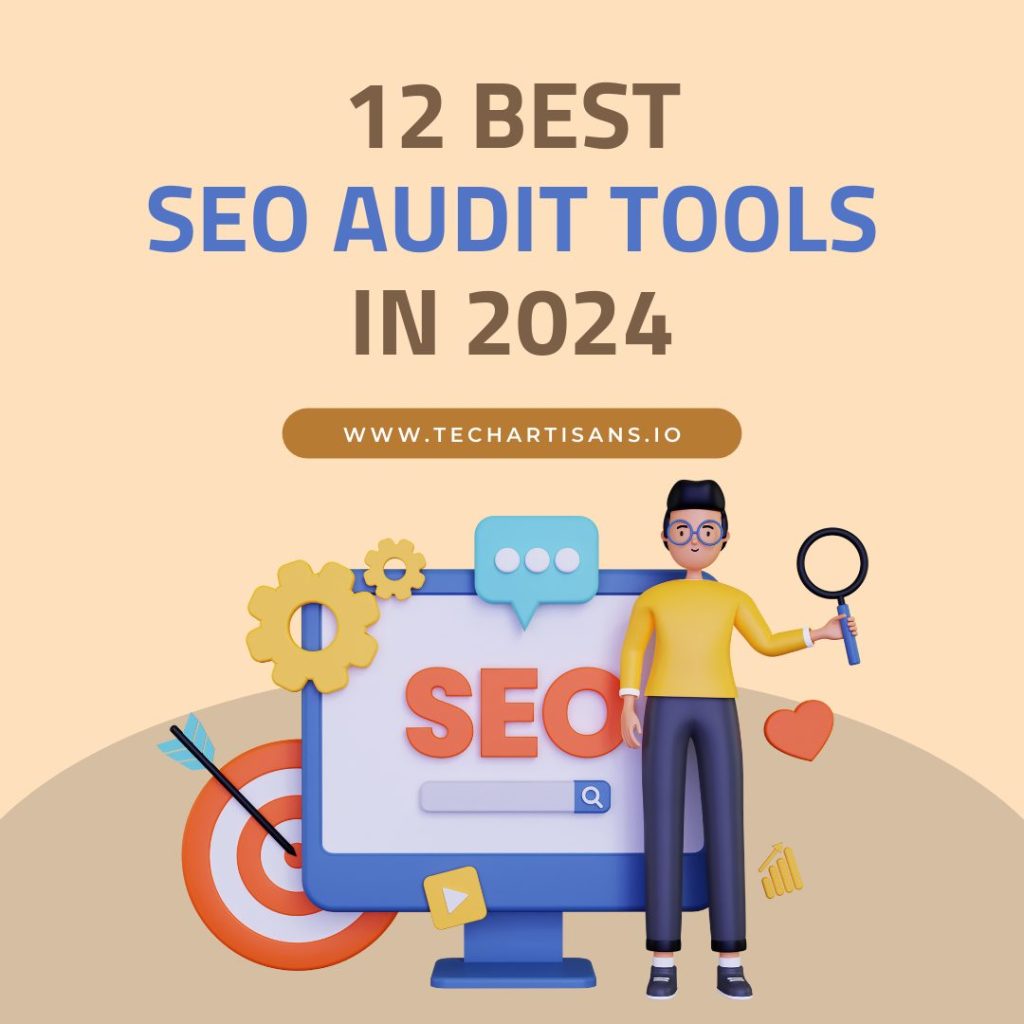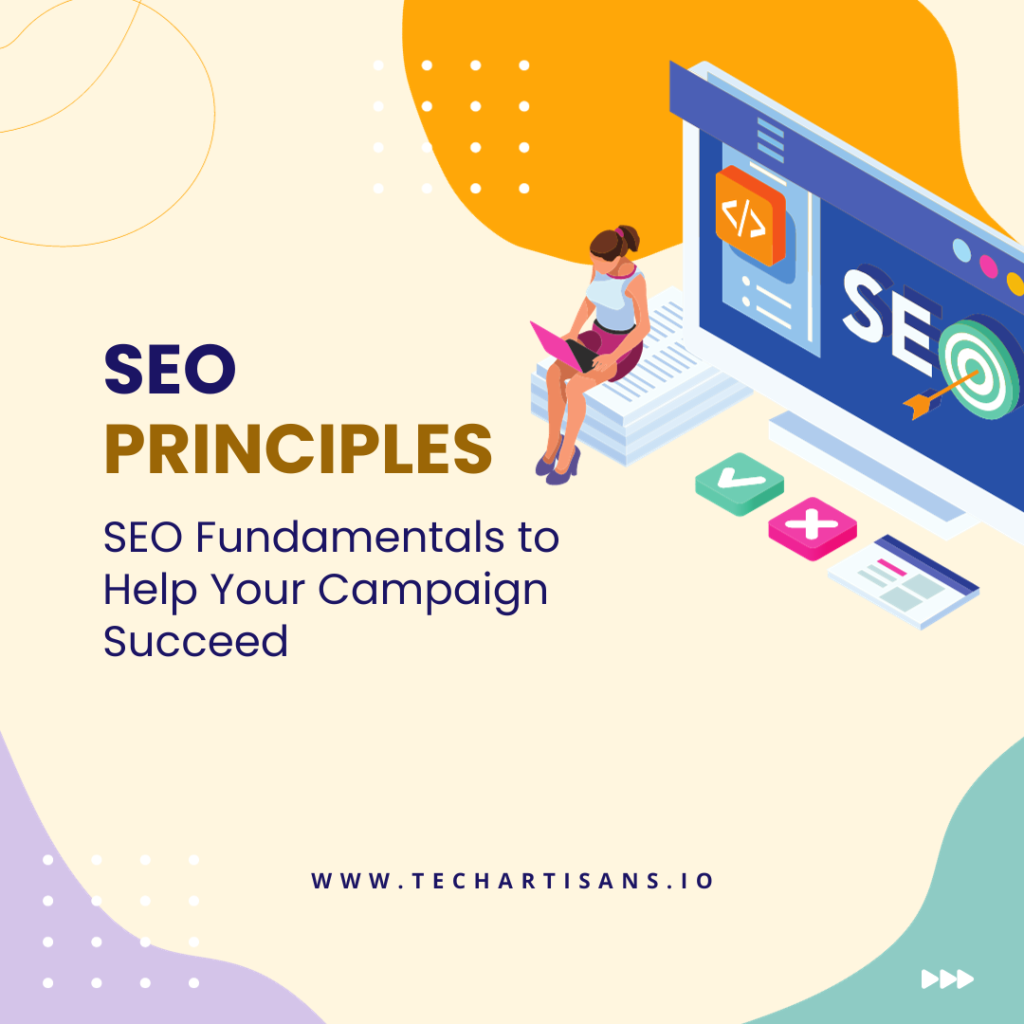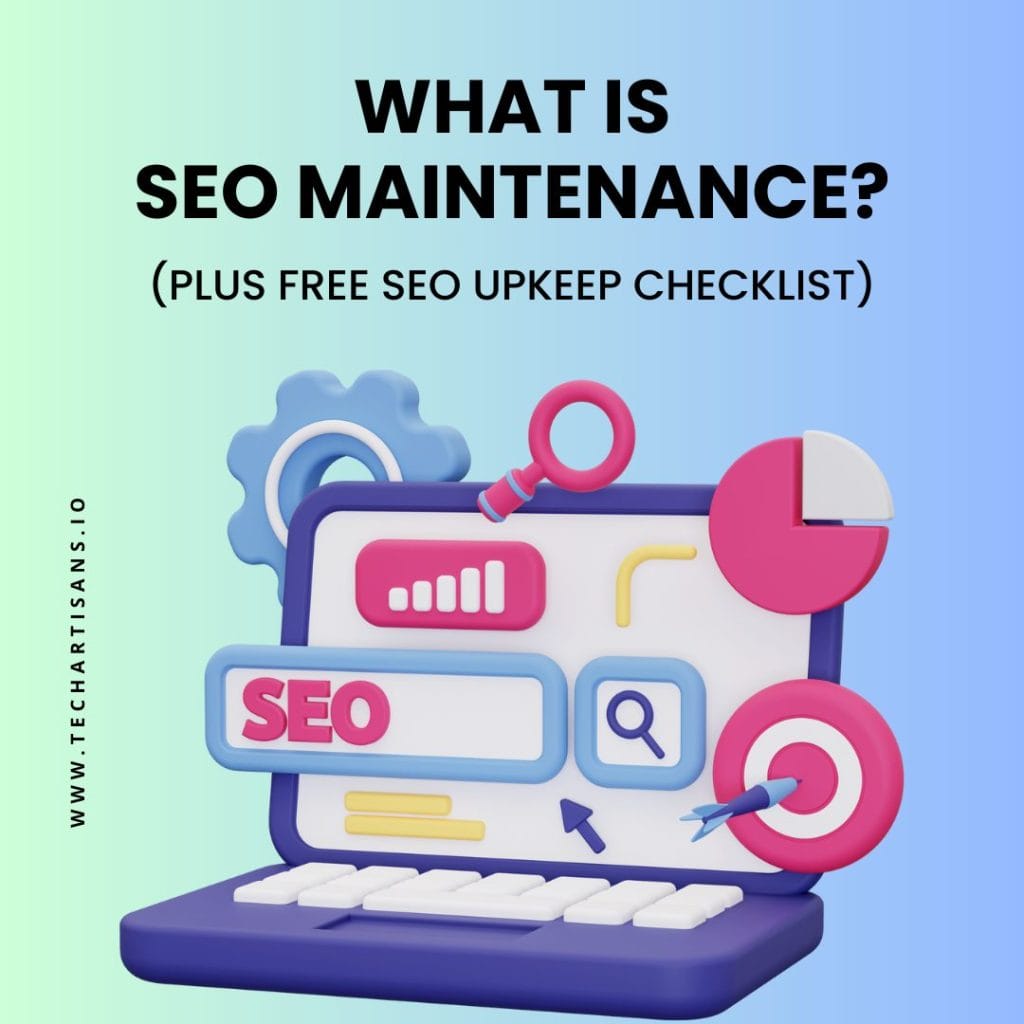SEO is vital for small to medium-sized businesses in the digital age, boosting online visibility and driving growth. SEO analytics, or ‘analytic SEO,’ guides your digital marketing strategies. It helps you understand your audience, identify the best-performing keywords, and reveal which aspects of your website need optimization. Let’s learn SEO analytics within 10 minutes, and you will understand why it is necessary to understand SEO.
What is SEO Analytics?

SEO analytics is a data-driven approach to optimize your website for search engines. It involves tracking, collecting, and analyzing relevant data to uncover user behavior patterns, search trends, and website performance.
It is essential to offer a roadmap to shape your strategies, make data-driven decisions, and boost website visibility, organic rankings, and business traffic and conversions.
Differences from General SEO

While general SEO revolves around optimizing your website with keywords, meta tags, and link building for improved search engine rankings, SEO analytics takes a step further. It involves using data-driven insights to understand user behavior search trends and assess the performance of your SEO efforts, thereby enabling more informed and effective optimization strategies.
Read more about SEO Principles and Fundamentals
Importance of Understanding Your Audience

Let’s delve deeper into why understanding your audience is a non-negotiable in analytic SEO.
Learn more about What is SEO Management and SEO Strategy
1. User Intent and Its Role in SEO

User intent is a user’s primary goal when typing a query into a search engine. It falls into four main categories: informational, navigational, transactional, and commercial investigation.
User intent is vital for SEO analytics. Aligning your content and strategies with your audience’s wants leads to better rankings and more traffic.
Find out How to Master SEO
2. Differences Between Four Intents

Navigational Intent:

Navigational intent refers to search queries where the user aims to reach a specific website or webpage. They already know their desired destination, be it your business’s homepage or a particular product page, and use the search engine as a navigation tool.
Informational Intent:

Informational intent describes queries to gather knowledge or answer questions. The user isn’t necessarily aiming to purchase or visit a specific website; they seek information. When catering to informational intent, providing relevant, high-quality content is key.
Transactional Intent:

Transactional intent, as the name suggests, pertains to searches where the user intends to perform a transaction, usually a purchase. These users have often decided what they want to buy. Your goal here is to make your product or service their chosen asset.
Commercial Intent:

This refers to searches where users have a strong purchasing intent but compare options before making a final decision. It’s crucial to highlight your competitive edge in these cases.
Core Elements of SEO
Let’s delve into these crucial components to understand their role and influence in an effective analytics SEO strategy.
1. On-Page SEO

On-page SEO is a critical component of SEO analytics that focuses on optimizing individual web pages on your site to rank higher and attract more relevant traffic in search engines.
Discover Web Files That Improve Your Website
Content Quality:

High-quality content is the heart of on-page SEO. It’s about creating informative, engaging, and unique content that provides value to your audience. The better the quality of your content, the more likely it is to be shared, increasing your website’s visibility and driving more traffic.
Keyword Research:

Keyword research identifies the most relevant words and phrases your target audience uses to search for your products or services. By integrating these keywords into your content, you can align your website with your users’ queries, improving your search engine rankings.
HTML Optimization:

HTML optimization involves enhancing your webpage’s HTML code to increase its relevance to specific keywords and to remove obstacles to the indexing activities of search engines. This can include optimizing title tags, meta descriptions, and header tags for better search engine visibility.
2. Off-Page SEO

Building Relationships:

Off-page SEO is about building relationships with influencers and industry leaders, aiming for guest blogging, collaborations, and partnerships to boost visibility and credibility, leading to quality backlinks.
Learn more about Digital Marketing Trends
Backlinks:

Backlinks, those ‘votes of confidence’ from other sites, tell search engines your content is credible, affecting your search ranking. Quality backlinks from reputable industry sites can greatly enhance your SEO, but remember, quality counts, not quantity; search engines prefer high-quality links over many low-quality ones.
White Hat vs. Black Hat SEO
Let’s delve into these two contrasting approaches, their impact on your website’s ranking, and why staying within Google’s guidelines is crucial.
1. Ethical vs. Unethical Practices

White Hat SEO follows search engine rules and focuses on quality content and legitimate backlinks for user value. In contrast, Black Hat SEO uses deceptive tactics to manipulate algorithms, risking penalties like lower rankings or de-indexing. Ethical SEO is the right and sustainable path to online success.
Here’s Debunking SEO Benefits of Exact Match Domains
2. Risks of Black Hat Techniques

Black Hat SEO techniques carry substantial risks. They violate search engine guidelines and can result in penalties that drastically lower your website’s ranking. Your site could be removed from a search engine’s index in severe cases. Furthermore, these tactics can damage your brand’s reputation, eroding the trust and credibility you’ve built with your audience.
Role of Content in SEO

Let’s explore the integral role of content in SEO and how it influences your website’s visibility, credibility, and overall online success.
1. Why “Content is King”

“Content is King” emphasizes the importance of top-notch, relevant content in SEO. It’s your website’s foundation, drawing and retaining visitors; the better the content, the more likely it is to be shared, significantly boosting your SEO rankings.
Search engines prioritize content when ranking pages, so frequent high-quality content with relevant keywords enhances your visibility. Engaging content also builds trust, establishing your business as an industry expert, boosting credibility, and increasing conversion rates.
Consider the Benefits of Using Videos on a Website
2. Importance of Quality, Intent, Freshness, and Relevance

Quality, intent, freshness, and relevance are the pillars of SEO-friendly content. Quality content is engaging and valuable to the reader. Intent refers to aligning your content with the user’s search purpose. Freshness highlights the need for regularly updated content that reflects the latest trends and information. Relevance ensures that your content matches the user’s search query, improving your ranking in search engine results.
Keyword Research and Selection

The right selection of keywords forms the backbone of your SEO efforts, acting as a compass for your content creation and distribution strategies.
Explore more about How to Research Keywords – A Step-by-Step Guide
1. Significance of Keywords in SEO

Keywords are vital in SEO, linking user searches with your content. They help search engines assess relevance and drive targeted traffic, boosting visibility and conversions. Keywords are at the core of your SEO strategy, impacting rankings and user experience.
2. Tools and Strategies

Effective keyword research requires utilizing tools like Google Keyword Planner or SEMrush to discover high-volume keywords relevant to your business. Additionally, strategies such as analyzing competitor keywords, focusing on long-tail keywords, and considering user intent can help create a powerful keyword strategy to boost your website’s visibility.
3. Competition and Search Intent

In SEO analytics, analyzing competitors’ keyword strategies helps you find opportunities and benchmark your efforts. Also, understanding search intent is crucial; it aligns your content with user needs, improves rankings, and boosts conversions.
HTML Elements Crucial for SEO

Let’s delve into the key HTML elements critical for optimizing your website for search engines.
1. Title Tags, Meta Descriptions, Schema, and Subheadings

Title Tags: Title tags are HTML elements that specify the title of a webpage. They are a critical part of SEO as they help search engines understand what your page is about. A well-crafted title tag can improve page rankings and increase click-through rates.
Meta Descriptions: Meta descriptions give a summary of a webpage’s content. They appear under the title tag in search results. An effective meta description can improve visibility and drive more traffic to your site.
Schema: Schema is a type of microdata that helps search engines parse and interpret your website’s information. Implementing schema can improve your site’s SEO and enhance its appearance in search engine results.
Subheadings: Subheadings (H1, H2, H3, etc.) organize your content and make it easier for readers to navigate your page. Search engines also use them to understand the structure of your webpage and its content, making them a vital tool for SEO.
Read about Explanation of SSL Certificate Errors and Solution
2. Impact on Search Rankings

Title Tags: They signal to search engines the main topic of a webpage, influencing relevancy factors. A relevant, accurate title tag can boost your webpage’s ranking.
Meta Descriptions: While not a direct ranking factor, they impact click-through rates. A compelling meta description can engage users to click on your link, indirectly improving your SEO ranking.
Schema: This microdata aids search engines in understanding your content more effectively. Better comprehension can lead to better visibility in special search results, often improving ranking.
Subheadings: They help search engines understand the content structure. A well-structured page with clear subheadings can rank higher due to enhanced readability and user experience.
SEO Analytics Tools and Software

SEO Analytics Tools and Software provide crucial insights and metrics that can aid in refining your SEO strategy for optimal results.
1. Introduction to Popular Tools

Google Analytics: A powerful tool provided by Google, Google Analytics furnishes comprehensive data about your website’s traffic, user behavior, and conversion rates. With its strong reporting features, you can monitor your SEO efforts and make informed decisions to enhance your website’s performance.
Ubersuggest: This is an all-in-one SEO tool developed by Neil Patel. Ubersuggest offers keyword research, site audit, and backlink analysis, among other features. It provides insights into your website’s SEO performance and competitors, guiding your content and SEO strategies.
Ahrefs: Renowned as one of the best SEO tools in the market, Ahrefs provides a wide range of features like keyword research, content research, and backlink checking. Its detailed analytics help you understand how your website performs, enabling you to make data-driven SEO decisions.
2. How to Interpret Data From These Tools

Google Analytics: Look at metrics like ‘bounce rate’ and ‘average session duration’ to gauge user engagement. High bounce rates suggest your content is not resonating with visitors, while longer session durations indicate users find your content valuable.
Ubersuggest: Pay attention to your SEO score, which indicates your site’s overall SEO health. Also, analyze your organic keywords and their rankings to understand what’s working in your SEO strategy.
Ahrefs: Examine your site’s Domain Rating (DR) and URL Rating to determine your website’s standing compared to competitors. Higher ratings reflect a stronger backlink profile, positively impacting your site’s ranking.
Practical Steps to Implement SEO Analytics

Let’s delve into these actionable steps to help you successfully integrate analytic SEO into your digital strategy.
1. Setting up Your Analytics Tools

Setting up your analytics tools is a vital first step in implementing SEO analytics effectively. Start with Google Analytics: sign up for a free account, add your website to Google Analytics, and then install the tracking code to your site. This allows Google to collect data about your site’s performance and visitor behavior.
Ubersuggest: Enter your website URL into the tool, and it will begin to analyze your site’s SEO health and provide valuable insights.
Ahrefs, create an account, add your website, and verify ownership to get access to comprehensive SEO analysis reports.
2. Monitoring and Interpreting Data

Monitoring and interpreting data involves consistent tracking of your website’s performance metrics and understanding what these numbers mean for your SEO efforts.
Begin with Google Analytics: regularly check metrics like ‘Pageviews,’ ‘Pages/Sessions,’ and ‘Bounce Rate.’ These figures provide insights into your audience’s behavior on your site and reveal potential areas for improvement.
With Ubersuggest, you can monitor your website’s SEO score and keyword rankings. These metrics help you gauge your site’s SEO health and performance relative to competitors.
Ahrefs, you should monitor your ‘Domain Rating’ and ‘URL Rating.’ These ratings show the strength of your site’s backlink profile, a crucial factor in its SEO ranking.
3. Making Informed Decisions

Making informed decisions based on analytics involves identifying patterns, trends, and insights from your data and using this information to drive your SEO strategy. For instance, if you notice certain keywords are performing well, optimize your content to emphasize these keywords. Alternatively, consider improving your user experience to retain visitors if your bounce rate is high. Your ability to adapt and refine your strategy based on these insights is crucial for SEO success.
Conclusion
Mastery of analytic SEO is essential for small to medium-business owners looking to leverage digital platforms for growth. Learn the basics and use tools like Google Analytics, Ubersuggest, and Ahrefs for actionable insights. Regularly analyze data with these tools to refine your SEO strategy. Remember, SEO analytics is dynamic, so keep learning and adapting to stay ahead. This guide is your first step towards SEO analytics mastery, and by applying these tactics, you will see real improvements in your website’s performance soon.







